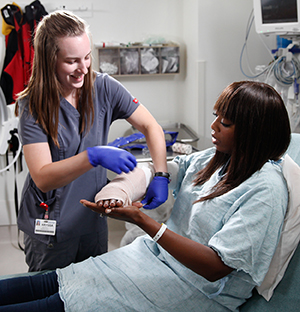Renal Bone Disease
Renal Bone Disease
Calcium and phosphorus are minerals found in many foods and are important for your body's function. Your body works best when these minerals are in balance. Excess phosphorus is usually wasted by the kidney. But if you have kidney disease, phosphorus may build up in your blood. Excess phosphorus in the body tends to bind with calcium and gets deposited in blood vessels and other organs. Because most of the calcium is in the bones, this constant robbing of the calcium by phosphorus leads to lowered calcium levels in the blood. Kidney disease also leads to reduced vitamin D levels in the body. All these changes lead to a health problem called renal bone disease.
How renal bone disease can affect the body
If it is not controlled, your bones can become weaker over time. This can increase your risk of bone fractures. The spine, ribs, and bones in the hands and feet are often at greatest risk. If your bones weaken too much, walking or coughing can be all it takes to cause a fracture. Controlling the phosphorus level in your blood is the best way to protect your bones.
If renal bone disease progresses
The following problems may occur as the disease worsens:
Itchy skin
Bone and joint pain
Brittle bones
Fractures
Muscle weakness
Deposits of calcium phosphate appear in organs, such as the heart, lungs, eyes, skin, and gums
Updated:
September 17, 2017
Sources:
Up To Date. Pathogenesis of Renal Osteodystrophy
Reviewed By:
Image reviewed by StayWell art team.,Latif, Walead, DO,Walton-Ziegler, Olivia, MS, PA-C
